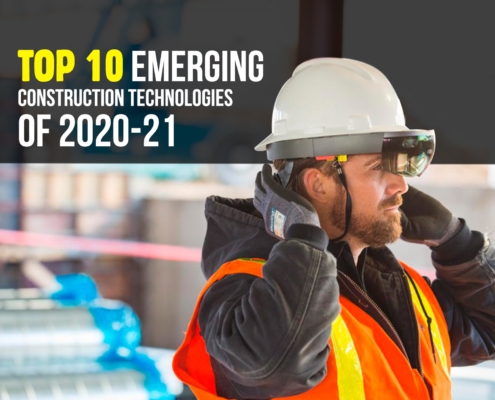The Construction Industry:
Construction industry profitability is low. Frequent time and budget overruns give rise to customer dissatisfaction. Knowledge preservation and transfer is another significant problem that the industry is facing. The skills that construction professionals need to succeed are developed over decades of experience, and organisations run the risk of skills loss when older workers retire.
The role of technology:
More than ever before the industry is looking at technology to manage its work processes more efficiently. On the other hand, available digital construction management systems often digitize existing manual processes, basically applying technology superficially to the façade of construction workflow rather than to its substance.
Access to data:
Construction companies have access to a broad range of internal project data (both digital and analogue) such as project profiles, micro-level processes, workflows, worker/customer interactions, time delays and cost over-runs. They also have access to commonly available data that covers construction performance standards and preferences. Not many construction businesses are making full use of available data, discarding valuable insights that can improve efficiency and minimise the risk of skills loss.
Data Science & Predictive Systems:
The fields of data science and predictive systems can transform the construction industry through the ability to capture and analyze data and to generate business insights. Predictive systems can allow construction companies to better measure and manage their performance, and improve strategic decision making.
These systems make full use of available data to create an accurate and quantifiable view of the factors that drive project experience, business performance and workflow improvement. They can also create a rounded near-real-time view of the value potential of every decision that may be undertaken. The systems can create considerable value through a wide collection of applications across performance management, strategic planning and real-time engagement with all project stakeholders.
This analytics-driven approach can give the construction industry a quantified and systematic view into problems and opportunity areas, enabling the business to implement a methodical project journey improvement. The near-real-time nature of analytical insights enables the systems to create a proactive daily project engagement at a micro level.
Opportunity:
The construction industry needs an approach that centres on better use of data and predictive project-experience. This approach can be implemented over a number of phases in line with the following synopsis:
Phase One – Micro Level Data Store: This involves capturing operational process-level data, both aggregate data and data on individual projects. This data is then sorted, categorised and stored. The comprehensive and dynamic process-level data sets will allow the system to map and track project performance across processes, workflows and interactions with all project stakeholders.
These data sets encompass the full projects database and span the whole development and construction journey; from planning, design, bidding, construction and maintenance. The data store serves as the foundation for data analysis and interpretation, and for developing an in-depth understanding of project experiences. The data store should have clear and consistent mapping across all data sources and unique identifiers for processes, schedules, responsibility and other important business inputs.
Phase Two – Predictive Performance Scores: This entails developing analytics, using several types of machine-learning algorithms, to understand and track what is influencing project and business performance, and to detect specific events. The algorithms generate predictive scores for each process of each stage of each project. These scores allow the system to predict individual project performance and the value outcomes of time, cost and quality. That allows the business to assess the ROI for a particular investment and directly tie initiatives to business outcomes.
Phase Three – Insight Generation: Information, insights and suggestions are shared with a range of frontline construction professionals. For example, employees can receive alerts about the actions they should take to record experiences or to improve project outcomes. The predictive platform delivers timely insights and prompts swift action, both by employees and through real-time interfaces with management and other project stakeholders.






